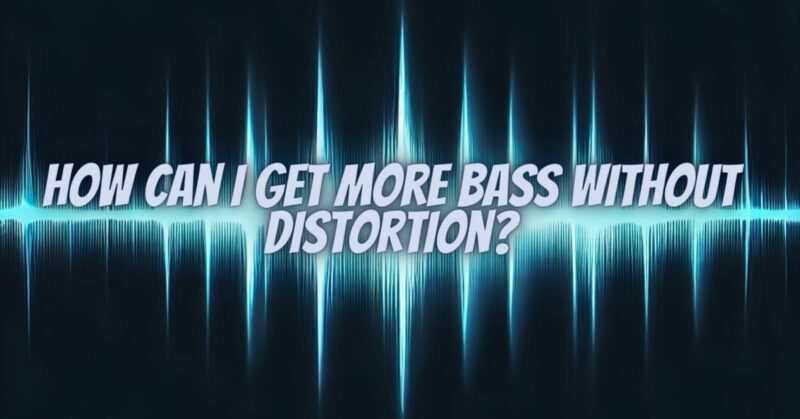Bass is a fundamental part of many genres of music, and it can be tough to get it right. If you’re not careful, you can easily end up with distortion, which can ruin the sound of your track.
Here are some tips on how to get more bass without distortion:
1. Use a good subwoofer. A subwoofer is a dedicated speaker that is designed to reproduce low frequencies. If you have a good subwoofer, you will be able to get a much better bass sound than if you are only using your regular speakers.
2. Place your speakers correctly. The placement of your speakers can have a big impact on the bass sound. For the best results, place your speakers in the corners of your room. This will help to create a more even bass response.
3. Treat your room acoustics. The acoustics of your room can also affect the bass sound. If your room has a lot of hard surfaces, it will reflect sound waves and create a muddy sound. You can improve the acoustics of your room by adding soft furnishings and acoustic panels.
4. Use a compressor. A compressor is a dynamic processor that can help to level out the volume of your bass signal. This can help to reduce distortion and create a more consistent bass sound.
5. Use an equalizer. An equalizer is a filter that can be used to boost or cut different frequencies. You can use an equalizer to boost the frequencies that are responsible for the bass sound in your track. However, be careful not to boost too much, as this can lead to distortion.
6. Use a limiter. A limiter is a dynamic processor that can help to prevent your bass signal from clipping. Clipping is a type of distortion that occurs when the signal exceeds the maximum output level of your system. By using a limiter, you can prevent clipping and get a cleaner bass sound.
7. Experiment. The best way to find out what works best for your music is to experiment. Try different combinations of settings on your subwoofer, speakers, compressor, equalizer, and limiter. See what sounds best to you and your audience.
Here are some additional tips to keep in mind:
- Use a spectrum analyzer to identify the fundamental frequency of your bass sound. This is the frequency that the sound is built around, and it is the frequency that you should focus on when EQing and compressing your bass.
- Cut any frequencies below 20Hz. These frequencies are not audible to most people, and they can take up headroom and make your mix sound muddy.
- Use a gentle boost in the 40Hz to 60Hz range. This will help your bass to stand out and be more impactful.
- Compress your bass to make it more consistent and punchy. However, be careful not to over-compress, as this can make your bass sound boomy and distorted.
- Reference your bass mix to other commercial tracks in the same genre. This will help you to get a better idea of how your bass should sound in a real-world context.
By following these tips, you can get more bass without distortion and create a better overall sound for your music.

